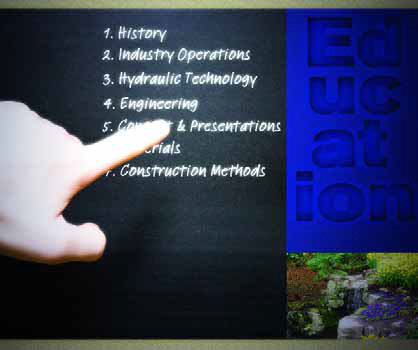project management
If you ask my employees and manage to get an unguarded response, they’ll tell you that I’m an unrelenting pain in the neck – a real tyrant. That’s because I’m always asking nagging sorts of questions such as, “Why isn’t this project finished yet?” or “How much longer is this going to take?” or “Can you speed things up?” My point in asking, of course, is to let them know on some level that if I were on site and was responsible for what was happening, we’d already be
From my perspective on the design and installation side, I see bringing landscape lighting to a property as a process that includes careful planning and execution as we compose the different scenes and lighting elements; count and select fixtures; lay out the power-distribution system; install everything properly; and, finally, fine-tune it all before turning things over to our clients. Looking at it from the other side, it’s been my observation that clients approach these projects with an equivalent level of deliberation: Even among relatively affluent clients, landscape lighting represents a significant
It seems to be a trend: In more and more of the conversations I’ve been having with watershapers, the level of interest in what’s involved in working overseas has really spiked in recent weeks and months. I recall a time several years back when curiosity about overseas work focused on the glamour and excitement of stepping into uncharted territory. Now, however, there’s a certain urgency to the inquiries, and my guess is there are at least three reasons behind it. First, there’s the enduring sense of the prestige and energy that
One person’s error is often another’s opportunity – and that’s exactly how my relationship with Disney’s Epcot Center began. The famous Florida theme park has held its International Flower & Garden Show in the spring for many years now, and one of the festival’s more popular highlights has long been the program’s “Water Garden Wonders” exhibit. A local Floridian pond contractor had always taken care of the waterfeatures for the show, but after a series of problems, officials at Disney decided to make a change and I was contacted to see if our company, Aquascape of St. Charles, Ill., would be interested in taking over the pond-construction duties. I was immediately on board with the idea. After all, how do you say no to
In the often wild and woolly world of custom landscape and watershape design, it’s sometimes impossible to predict the sources of the most interesting and challenging projects – or anticipate how we manage to find our ways into the middle of them. It’s all part of what makes this profession so uplifting at times – and so confounding at others. I’ve worked hard to accept and embrace the strange tides of fortune this business entails. As a case in point, this month (and next) I’m going to relate a story that captures the essence of what it can take to accommodate the unexpected and enlist the nerve it sometimes takes to
It’s an unfortunate fact that landscape architects receive little or no formal education in watershaping while they’re in school. As a result, where the typical landscape architect’s irrigation plan will show every pipe, fitting, wire and component for a given project, that same project’s pool plan will carry almost no detail at all. This phenomenon begs the question: Why don’t our colleges and universities do more to educate landscape architects about watershaping? The answer to this question causes me double pain, because I know full well that
Sometimes finding just what you need is as easy as looking in your own backyard. That’s what happened for Greg Whittaker of Whittaker Homes, one of Missouri’s largest home builders, when he began searching for the right partner to provide dramatic watershapes for New Town, an innovative community in St. Charles, Mo., a suburb of St. Louis. Situated on the site of what had been a farming community, New Town is intended to invoke and embody a comfortable lifestyle for the 21st Century. Parklands filled with water were the key to Whittaker’s vision not just for aesthetic and thematic reasons, but also for stormwater management. While visiting St. Louis’ Forest Park, a venerable civic treasure, Whittaker saw the






















